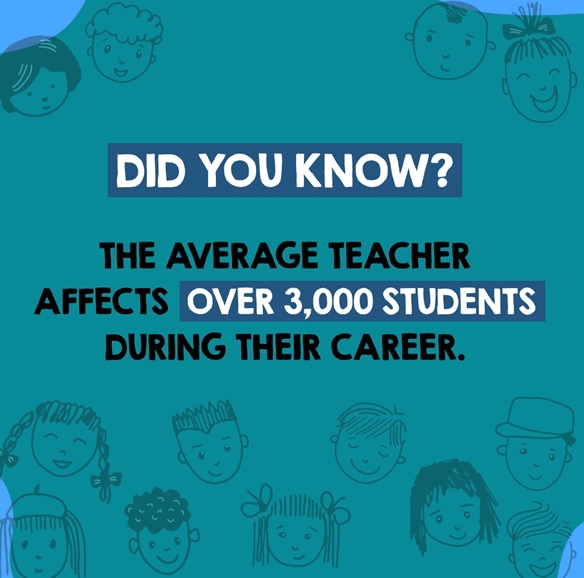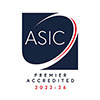Ensure Student's Success: Effective Principles Of Effective Instruction To Incorporate In Your Teaching Practice
29th January 2024

Teacher’s goal is not just to teach lesson to their lesson on a daily basis but also to make sure that their student understands their instruction properly. Other than teaching, teachers also play a major role in shaping student’s careers for the future as well.
According to weareteachers.com survey also, we can see that an average teacher makes an impact on over 3000 students' lives.

Source: weareteachers.com
Every teacher's impact on student’s life starts with developing effective instructions for them to make their learning experience better.
In this blog post, we will be exploring some of the useful and essential principles that you must keep in mind while developing instructions and how you can implement them successfully in both physical and virtual classroom.
Before moving to the topic, can we ask you a question? Do you follow us on Social Media? We regularly share upgraded educational content, tips, feedback, and more. Check us out by clicking the profiles here - Facebook / Twitter / LinkedIn / Pinterest / Instagram / YouTube
So, without any further delay, let’s get started.
Principle 1: Frequent Student-Faculty Contact
Regular student-faculty interaction within and outside the class is very critical for the motivations and engagements of students. The interactions make students feel connected, supported, and intellectually engaged by their teachers. You can use below idea for implementing this principle successfully:
- Establish a regular office hour and stick to them in order to create a friendly, open-door environment for students.
- Set an expected response time for email that will inform your students of how long they must wait before expecting an answer from you.
Principle 2: Mutual Obligation and Cooperation Among Students
Learning is usually more effective when it is social and collaborative rather than competitive and isolated. Structuring learning environment as a team effort can enable students to gain from discussing ideas, talking about the subject matter in questions and working together to achieve common goals. Consider using below ways to implement this principle successfully:
- Incorporate activities for students which gives them the opportunity for sharing their ideas and perspective which will improve their understanding for every lesson.
- Laying out clear guidelines for group work in order to enhance collaboration.
Principle 3: Active Learning Techniques
Learning should be active rather than passive. Involving the students in some kind of activities that make him interact with the material, think about his learning and apply this learning in practical situations can enhance retention of learning. Some of the effective active learning techniques include:
- By class discussion techniques like think-pair-share, where students think on a particular question/ situation alone, discuss it with a classmate then share out their thoughts to the whole class.
- Encouraging students to write reflectively about what they did learn and how it is linked between their past experience and daily life of theirs.
Principle 4: Prompt Feedback
Timely, constructive feedback allows the student to grow and develop. Feedback helps the students to self-assess their present state of knowledge, keep track of those areas where an urgent need for improvement can be noted and also reflection on their learning progress. For applying timely feedback principle, you can consider using:
- Create an open and judgement free environment where students can ask questions in class and get instant feedback.
- Providing opportunities to the students to reflect on material learned either through web-based discussion forums or one-minute papers at the end of class periods.
Principle 5: Emphasizing Time on Task
Effective learning requires effective time management. You must allocate realistic amounts of time for the learning activities to ensure that they get enough time and opportunities to work on the materials and at the same time they be able to learn time management skill.
You can consider below tips to teach them about time management skill:
- Setting realistic deadlines for the students and clearly communicating to them.
- Considering other responsibilities of the students and facilitating the needs of the students while making out the schedule for the assignments and exams of the student.
Principle 6: Helping Them To Set High Expectations
Setting high expectations for students and even motivate them to expect more can play a positive role in improving every student’s performance. It can help them to unlock their full potential while striving to achieve their goals. Some of the effective ways to set high expectations for students are:
- Communicate the expectations clearly at the very beginning of the session and give relative assignments and projects which help them to achieve the expectations.
- You must consider maintaining high expectations throughout the sessions and avoid to make any changes in-between the session as it may confuse students.
Principle 7: Create an Inclusive Learning Environment
Every student is special and unique and has different abilities, way of learning and different backgrounds. Respecting each and every student is the key to create an inclusive and supportive learning environment. You can consider using these tips to create an inclusive learning environment:
- You can make effort to understand each and every student’s ability, strengths and their way of learning.
- You can offer them various learning opportunities and assessments according to the different need and style of each student.
Understanding Student’s Need Is The Key To Develop Effective Instruction
Creating a impactful learning experience is one of the important aspect to ensure every student’s success in their academic journey. One of the best ways is by developing instructions effectively. Those teachers who have pursued courses like Virtual Online Teaching, knows the value of making their instruction effective to improve the learning experience in both physical and virtual classroom.
In this blog post, we have shared various principles of effective instructions which can consider incorporating in your teaching practices to improve student’s engagement, motivation and learning outcomes.
Lastly remember that effective instruction is an ongoing process of reflection, adaptation, and improvement. Continuously evaluate your teaching practices, seek feedback from students, and stay updated with the latest research and best practices in education. With a commitment to excellence in teaching, we can make a significant impact on our students' educational journey.
We believe education should be accessible for everyone. That’s why we don’t charge for our blogs. Find the right course that will help you in your career with us, contact us at - 1800–212–6400. You can mail us at act@asiancollegeofteachers.com.
Written By : Abhishek











